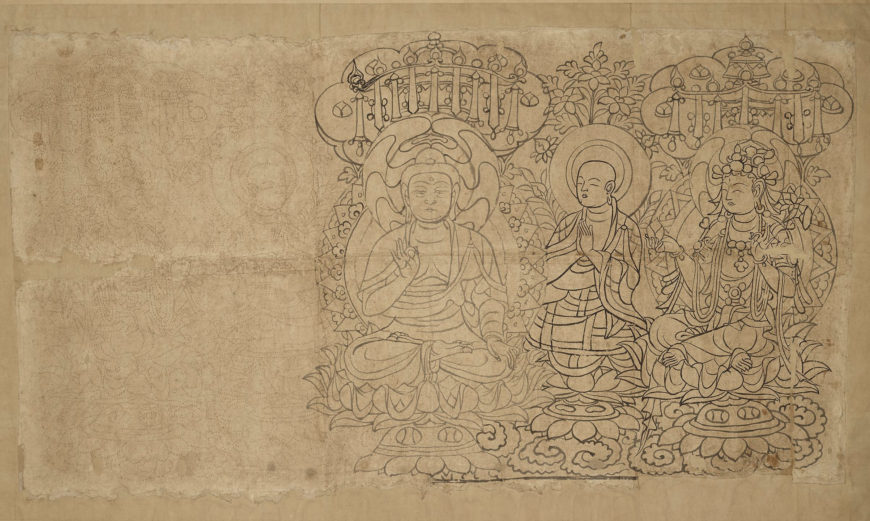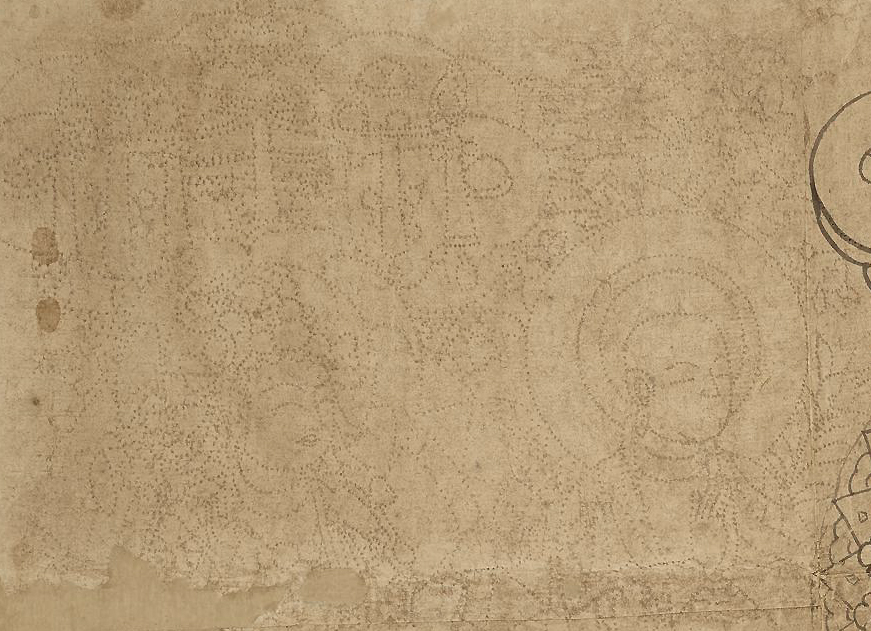
Stencil for a five-figure Buddha group, painting on paper, c. 926–975 C.E. (Five Dynasties or Northern Song Dynasty), paper, Qian Fo Dong, Mogao grottoes, Dunhuang China (© Trustees of the British Museum)
This stencil (or pounce) is one of very few to survive, and is the largest and most impressive of those found at Mogao. The outline of a Buddha group was painted on the right of the sheet, which was then folded down the middle and holes were pricked through both layers of the paper. This ensured perfect symmetry.

Stencil for a five-figure Buddha group, painting on paper (detail), c. 926–975 C.E. (Five Dynasties or Northern Song Dynasty), paper, Qian Fo Dong, Mogao grottoes, Dunhuang China (© Trustees of the British Museum)
To transfer the design to the wall, the stencil was laid out flat and a reddish powder was puffed or patted through the holes, leaving a dotted outline when the stencil was removed. This stencil has clearly been used, as it bears traces of powder.
Repeating groups of such Buddha assemblies can be found in many of the caves at Mogao from this period, especially on the ceilings. Recent research has shown how similar stencils are still used today in workshops decorating Buddhist temples in Qinghai province, near Dunhuang.
© Trustees of the British Museum


